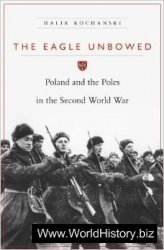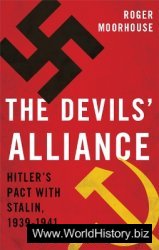During the prosperous 1920s, the motion picture industry enjoyed success in keeping with the times. By 1930, 90 million filmgoers poured into theaters across America each week. Then, during the early years of the Great Depression, attendance dropped considerably and many studios struggled. Admissions expenditures fell from $732 million in 1930 to $482 million in 1933. However, as early as 1934, ticket sales began rising again as movies became for many the primary source of diversion during the depression and, after that, World War II. Although attendance did not recover to the 1930 peak, it averaged 85 million weekly during the war. Theater receipts rose to $735 million by 1940 and then soared to almost $1.5 billion by 1945.
The depression decade accelerated development of the system of conglomerate studios, which characterized the motion picture industry for decades. Between 1930 and 1933, 5,000 theaters closed and numerous small Hollywood studios folded or were absorbed by a few major film companies. Yet, as attendance and revenues climbed, big studios perfected an assembly-line production technique, and producers repeatedly returned to successful formulas to maximize returns. The dismal economic conditions fueled demand for escape, and a huge manufacturing system evolved to create standardized entertainment for the public.
With the development of talking pictures in the 1920s, sound itself often was the star and stories were less significant, but a simple underlying framework emerged nonetheless: violence did not exist, evil was punished, and sexuality was not acknowledged. Certainly, there were exceptions, but it was no coincidence that 6-year-old Shirley Temple was a major attraction. America on film was, generally, a utopian society filled with middle-class white families who wore nice clothes, lived in nice houses, and enjoyed nice lives. Through a variety of genres, such as comedies, westerns, and musicals, movies in the 1930s usually served as entertaining diversions from reality rather than as social or political statements. Historical biographies and period dramas, such as Gone With the Wind (1939), held particular resonance because such films typically portrayed an era safely distant but which delivered a message that problems had arisen before and been overcome.
Nonetheless, considerable changes in the film industry accompanied the depression. Slapstick comedy, portrayed most notably by Charlie Chaplin, had been enormously popular during the silent age. But, with the economic despair that followed the STOCK market crash, irreverent and cynical comedy by W C. Fields and the Marx Brothers gained tremendous popularity in contrast to their goofy peers like Abbott and Costello or the pleasant team of Bob Hope and Bing Crosby. The Marx Brothers’ skits often were nonsensical but bitter and sarcastic as well, and the five films they released between 1929 and 1933 garnered huge profits.
Not surprisingly, there were cinematic adaptations of suffering families too, but since most people hoped to escape their daily lives, the number of poignant sagas about misery was small. The most highly regarded “depression” film was The Grapes of Wrath (1940), based on the novel by John Steinbeck. Yet while the novel examined issues such as economic justice, humanity, and the control of land, the Hollywood version was more conservative and concentrated primarily on the family unit. Both the novel and the film affirmed positive messages despite the gloomy setting, but the film conveyed a more optimistic outlook at the expense of Steinbeck’s most pointed social and political criticisms.
The decline in ticket sales in the early 1930s generated a range of responses by studios and theaters to retain their customers, including double features and instant-winner contests. Themes involving sexuality and immoral women also became more visible, and major female stars, such as Greta Garbo and Marlene Dietrich, played central roles. Typically, the women characters sinned, suffered indignities, and were punished or atoned, although Mae West starred in a succession of films that conveyed brash, confident sexuality and showed her having fun, which made her a sensation.
A second, more pronounced, change in movie content involved gangsters. Urbanization and immigration, preoccupation with prohibition and organized crime, and cynicism about businessmen and politicians were bundled together into classic tales of bad guys and their thirst for power. The first important gangster film was Little Caesar (1930), which was followed the next year by some 50 imitations. Two others, The Public Enemy (1931) and Scar-face (1932), complete the trio of films that set the standard for the genre. Most gangster films had similar plots: the bad guy was honorable in his way and used the corrupt system already in place to achieve success. Gangster films frequently mocked politicians and moralists and often depicted crime as the only avenue by which immigrants could rise out of poverty. Despite criticism from advocates for “decency,” these movies were extremely popular.
Eventually, the moralists prevailed, however. Persistent pressure for virtuous film content persuaded the film industry to protect itself against potential censorship or boycotts. In 1934, the motion picture industry adopted a code of practices that shaped filmmaking for the next 30 years. The basic tenets of the code ensured that dialogue was tame, criminals were not glorified, and violence and promiscuity were marginal. As a result, a second phase of gangster movies began in which the heroes were government agents. Interestingly, the man who epitomized gangsters in the early films, James Cagney, became the leading star among those who played the crusading G-men.
Another genre of movies arose in which other good guys prevailed—screwball comedies. Conventional screwball comedies were witty and offbeat, and they followed basic thematic patterns: farcical misunderstandings that end happily ever after; love triangles in which the right guy ends up with the girl; the naive common man temporarily outmaneuvered who turns the tables on the corrupt sophisticate. It Happened One Night (1934), which starred Clark Gable as the guy who gets the girl (Claudette Colbert), established the model on which many subsequent comedies were based. As the depression continued, however, big stars like Gable were less important in the role of the common man who succeeds. Folksy Will Rogers was celebrated for his “country boy” charm and hopeful humanity. In a quite different genre, westerns also usually emphasized good guys who triumphed.
The war effort also prompted its share of cinematic productions, which were watched closely by the Oeeice of War Ineormation and its Bureau oe Motion Pictures to ensure that appropriate messages were evident. Patriotism was pervasive, and movies about evil Nazis were numerous as the war in Europe unfolded. After the United States entered the conflict, war films illuminated the daring of pilots and the bravery of soldiers and sailors, but they tended to portray stereotypical characters and eschewed examinations of political issues. The most acclaimed war-themed film of the era was Casablanca (1942), which told the story of a cynical expatriate (played by Humphrey Bogart) who rediscovers his commitment to liberty and democracy.
The Hollywood community lent considerable support to the effort abroad as well as at home. Several leading men, such as Clark Gable and Jimmy Stewart, joined the military while numerous other performers served meals and visited hospitals. Frank Capra, the premier director of screwball comedies as well as of movies celebrating the common man—perhaps most notably, Mr. Smith Goes to Washington (1939)—created an instructional and inspirational series of films (“Why We Fight”) for the War Department, part of which was released to the public. Walt Disney, famous for cartoons, produced an animated documentary about the effectiveness of aerial bombing. And Bob Hope led a parade of entertainers into combat zones across Europe, spreading goodwill and offering cheer for homesick GIs.
Films targeted at women were released with regularity throughout the 1940s. By 1944, women represented more than one-third of the workforce, and a significant portion of the male population was committed to military service. Producers recognized the change and devoted resources to capturing women’s attention. In the 1930s, women often played supportive roles; however, throughout the war years, women not only were the leads but men sometimes were not a significant part of the story. Characters were mostly respected professionals (teacher, reporter) who wore elegant clothes and exuded matronly comfort. Women films revolved around concepts common in male-oriented films, such as bonding and justice, but typically involved emotions, attachment, and family, as in Dark Victory (1939) or Meet Me in St. Louis (1944).
The hundreds of films produced each year required dozens of stars to keep the movie machine functioning. Clark Gable was the favorite leading man; Jean Harlow was the original “blonde bombshell”; Fred Astaire’s elegance defined musicals; and Greta Garbo’s glamour and detachment made her a mysterious goddess. Gene Autry and Roy Rogers personified the cowboy until John Wayne created the classic western profile in Stagecoach (1939). Millions of boys emulated Mickey Rooney, who was the biggest box-office star in America before he turned 20.
Two men—James Cagney and Humphrey Bogart— were especially influential in the era and conveyed distinct personalities that illustrated societal conditions and changes. Cagney starred in 38 films between 1930 and 1941, but achieved stardom in The Public Enemy. His character, Tom Powers, became the template for nearly every subsequent gangster role. Cagney also symbolized much that was changing in American society. He was Irish American, and many of his roles involved urban tough guys who projected anger toward conventions of old America, such as naive morality and Prohibition.
Humphrey Bogart was the archetype of the 1940s male star, whose three successive roles in High Sierra (1941), The Maltese Falcon (1941), and Casablanca (1942) established him as the preeminent actor in America. Bogart frequently played cynical, wry, and streetwise loners who exuded toughness and sexuality despite the actor’s ordinary appearance.
Although male performers, directors, and producers dominated filmmaking in the era, many women also achieved fame and influence. Despite an undistinguished early career, Bette Davis became a supremely confident and compelling attraction who dominated women’s roles after her performance in Of Human Bondage (1934). Her fiery persona and captivating eyes made her a symbol of feminine strength. Katharine Hepburn became a symbol of evolving social conventions because her roles often challenged traditional norms regarding gender functions and responsibilities. Her controversial characters led many theaters to avoid her films in the 1930s, but she indisputably

Actor James Stewart (r) with British actor Claude Rains in a scene from Mr. Smith Coes to Washington, 1939 (Hulton/Archive)
Was Hollywood’s leading actress following the release of The Philadelphia Story (1940).
Walt Disney began the 1930s as the creator of an animated mouse named Mickey, and emerged after the war as the leader of a worldwide entertainment enterprise crafted around children’s fairy tales. Disney films originated as brief cartoons, but they possessed qualities that connected with audiences and impressed critics. In 1933, at the low point of the depression, Disney released The Three Little Pigs, which delivered through allegory complementary messages: work hard, do it right, don’t give up, and stick together to defeat the enemy. Those old-fashioned virtues mirrored the optimism and confidence of President Franklin D. Roosevelt, and the theme song from the film (“Who’s Afraid of the Big Bad Wolf?”) became a social anthem for the period. Snow White and the Seven Dwarfs (1937) was the company’s first full-length feature film, and its success inspired the growth of a wholly new type of movie.
In part because of the depression, in part because of sound, and in part because of stars, the 1930s represent the period of Hollywood’s greatest influence on American life. In the decade, spending on movie admissions accounted for roughly one of every five dollars spent on entertainment and recreation, and motion pictures also served as a powerful marketing tool for business and industry. America’s population had become preponderantly metropolitan, and the film industry helped sell a national urban culture to citizens across the country.
Still, dreams were the principal products of Hollywood’s film factories. Some movies linked fantasy worlds with facts to engage the audience, such as The Wizard of Oz (1939), but many merely were replicas of a simple formula that had proved successful before. If the woeful ECONOMY eroded confidence, the film industry attempted to rebuild the American psyche one dream at a time. Hollywood embraced an audience that was confused, downtrodden, and widely divergent, and sold everyone the same hope: Ordinary people can survive and humanity will prevail over sinister forces. Whether as an escape from despair or a distraction from war, the people came. And, when the depression was over and the war won, the people stayed.
See also popular culture.
Further reading: Andrew Bergman, We’re in the Money: Depression America and Its Films (New York: New York University Press, 1971); Charles Higham and Joel Greenberg, Hollywood in the Forties (New York: A. S. Barnes & Company, 1968); Charles Higham, The Art of the American Film, 1900-1971 (Garden City, N. Y.: Press/Double-day, 1974); Gerald Mast and Bruce Kawin, eds., A Short History of the Movies, 5th ed. (New York: Macmillan, 1992); John E. O’Connor and Martin A. Jackson, eds., American History/American Film (New York: Frederick Ungar, 1979).
—Douglas Propheter




 World History
World History









